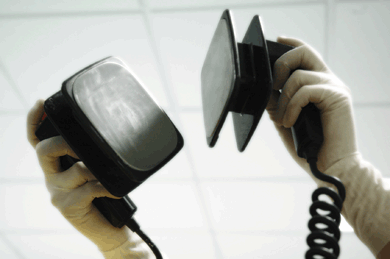
By: Bree Johnston
One issue that I think we have not examined sufficiently is the impact that repeated discussions about code status have on patients, family, and health care providers. I believe that repeated discussions about CPR are traumatic to the patient and family, erosive of trust, ineffective, and tend to distract the treating team from discussions and interventions that could be beneficial to patients and families.
I believe that is much more productive to think about harm reduction than to try to talk patients and their families them out of CPR. I agree with Blinderman, Krakauer, and Soloman that we need to think more actively about not offering CPR as an ethical option that is an appropriate path to harm reduction in some instances. This is the approach in the UK, and when I was there during the summer of 2010, I found that it was refreshing not to have to focus so much time on the code discussion.
Many hospitals have non-beneficial care policies in place in order to deal with patients and families who request non-beneficial care. In many institutions, the ethics committee must be called before this policy is invoked. In my experience, this policy is often used as a policy of last resort, and is not utilized often. I think that it may actually be kind to invoke these policies more commonly in instances in which families are traumatized by the burden of making end of life decisions.
Families feel a tremendous burden when making life and death decisions for a loved one. Depression, anxiety, and post-traumatic stress are common in such situations. Researchers have found that families facing end-of-life decisions in the ICU frequently desire more guidance than they actually receive. There is evidence that treating team support and communication can ameliorate some of the distress associated with the stress of having a loved one who is critically ill. In my experience, some family members are particularly traumatized by being the person who is “pulling the plug”. In these situations, taking some of the burden off of the family by taking the responsibility can be an act of kindness. When these policies are utilized, they will be most effectives if presented in a supportive rather than a paternalistic, heavy handed way. I say things such as “We want to offer all treatments that are likely to help you. In your situation, we think CPR won’t be helpful because it won’t reverse your underlying problem, and it is likely to cause more suffering. How do you feel about that?” In most, but not all, situations, that approach helps guide patients away from CPR who are unlikely to benefit.
Another avenue to harm reduction might be a short code (which Quill, Arnold, and Back discuss in their 2009 article in Annals of Internal Medicine). And I am finding that patients increasingly ask for limited resuscitation interventions, perhaps because of educational efforts around CPR or because of depictions of CPR on television. I find that commonly expressed sentiments include “I would just want a few shocks”, “just try to get me back and if it doesn’t work, let me go”, or “I want you to try – but don’t use machines. “
For much of my career, I have been frustrated at these requests. And I have heard many of my colleagues balk at these requests for “designer codes”. However, desire for a short resuscitation effort has some logic behind it. Outcomes are often good after short resuscitation effort, particularly if the patient has ventricular fibrillation/tachycardia. Many patients would want to be treated for these rhythms but would not want prolonged ICU care.
Any legitimate code must follow ACLS guidelines, and a short code is no exception. ACLS guidelines leave the duration of the code to the discretion of the attending physician and the code team. It is ethical to “call” a code after a reasonable amount of time if the interventions are not succeeding and the prognosis pre-code was dismal. A short code is not the same as a “show code” or a “slow code” – it is a legitimate resuscitation attempt, but an abbreviated one.
Unfortunately, a “short code” is not recognized as a legitimate request in most settings. Most order sets and POLST forms don’t have such subtleties written in – CPR decisions are black and white. For patients who have extremely poor prognostic characteristics who desire CPR, a short code may be a reasonable compromise if other avenues of harm reduction fail. It provides the patient and family with assurance that a potentially easily reversible condition won’t be neglected, but it minimizes the risk of initiating a prolonged ICU stay that is likely to be harmful to the patient and costly to society.
A challenge with the concept of a “short code” would be how to operationalize it. Any attempt to define a “short code” would be somewhat arbitrary, and should probably be debated if people think that the concept has merit. CPR survival goes down after 10 minutes, so that might be a reasonable cut-off. In addition, a “short code” might also be defined as one that is not associated with intubation, just support with airway positioning and ambu bag ventilation. Critical to the short code concept is that is defined, agreed upon, and used only in limited circumstances. In addition, the concept should be disclosed to the patient/family.
I look forward to an active debate on this!
NOTE: This is one in a series of posts for “Code Discussion Week.” Here is a list of the rest:
- It’s all in the Framing: How to Influence Surrogates’ Code Status Decisions
- Changing the Default Code Stus to DNR for Seriusly Ill Patients
- The Clinician as the Choice Architect – Nudging an Informed Choice About CPR
- What Is A “Natural” Death, Anyway?
- Discussing CPR: What Makes It So Different?
- CPR Discussions and Harm Reduction
- When Not to Follow an Advance Directive



